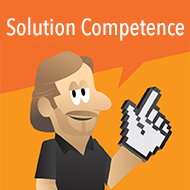Eutect presents ring soldering as innovative, sustainable and cycle time optimized soldering process at productronica 2021
The fact that there is also room for new process methods and innovations in the field of selective soldering is proven once again by Eutect GmbH with the newly developed SRS soldering process. SRS stands for Sustained Ring Soldering and, due to prefabricated rings made of solder wire, offers a new possibility of cycle-time optimized, highly accurate and economically sustainable assembly soldering.
“By means of the newly developed SRS module, pre-assembled solder rings can be placed on and around THT pins, which are then melted by laser, piston or induction soldering processes, as well as by means of IR emitters, hot air or thermodes”, Matthias Fehrenbach, Managing Director of Eutect GmbH, describes the basic principle of SRS soldering. The SRS module is a fully automatic ring production device that is used to produce specific solder rings from commercially available solder wires, with or without flux core. Depending on the tool used, solder wires of different diameters can be bent with specific ring diameters. The solder rings produced in this way can be positioned manually, with the aid of special tweezers and magazine dispensers, or automatically by means of special highly dynamic picks & place handling on the solder joints to be soldered or over the plated-through pins.
“SRS soldering is highly accurate and extremely sustainable because the amount of solder can be cut precisely,” Fehrenbach continues. Both in manual soldering and in the feeding of solder wire within laser, piston or induction soldering, the smallest deviations can produce different soldering results. “Due to the wire thickness as well as the defined wire lengths, a reproducible solder volume is always provided. There is no need for a gate, so almost 100% of a solder wire roll can be processed,” says Fehrenbach. This is particularly decisive for manual soldering, since the highest inaccuracy in terms of solder volume and flux exists here due to the time span used by the employee to solder the wire. Thus, the entire soldering process, whether manual or automatic, is optimized as sources of error are eliminated, scrap is reduced and process accuracy is increased. “Furthermore, due to the exact solder as well as flux volume of the solder ring, we can also define the energy requirement for melting even more precisely, so that we achieve further savings due to reduced energy requirements, especially for high series production volumes,” Fehrenbach discusses.
In initial evaluations, Fehrenbach’s team was able to demonstrate significant savings for the first customers. These include a reduction in wire waste, lower energy requirements, minimization of machine wear, and cycle time optimization due to the elimination of heating times and immediate availability. Furthermore, the SRS module can be integrated with the respective soldering module in the E-cell, so that this soldering process can be integrated inline into any existing process line. In the case of narrow pins, the solder rings are flattened or oval-shaped in the wire diameter, so that assembly is possible even in the tightest of spaces. Fehrenbach confirms: “In evaluations, we have proven that the solder points form cleanly and in a defined manner, regardless of the solder ring diameter and regardless of the heat source. The formation of the solder miniscus is exact and reproducible.”
Another advantage is the process speed. Since the placement of the solder rings is decoupled from the actual soldering process, both individual steps can be performed simultaneously. “This decoupling is a factor for cycle time optimization that should not be underestimated, especially with high production volumes,” says Fehrenbach. In addition to the sale of the SRS module, however, Eutect GmbH also offers the cutting of the solder rings as a service. “In this case, we cut the rings to the diameters required by the customer and deliver them as bulk material, magazined or strapped,” Fehrenbach describes the process. If the solder rings are packed in conventional girding, they can also be placed using a conventional placement machine. “Thus, the process of the SRS module in conjunction with our different soldering modules, combined in our ninth production cell E-cell, guarantees a very high process accuracy and reproducibility,” emphasizes Fehrenbach.
Eutect presents SRS soldering at the competence stand on the subject of soldering in Hall A4, booth 315.















